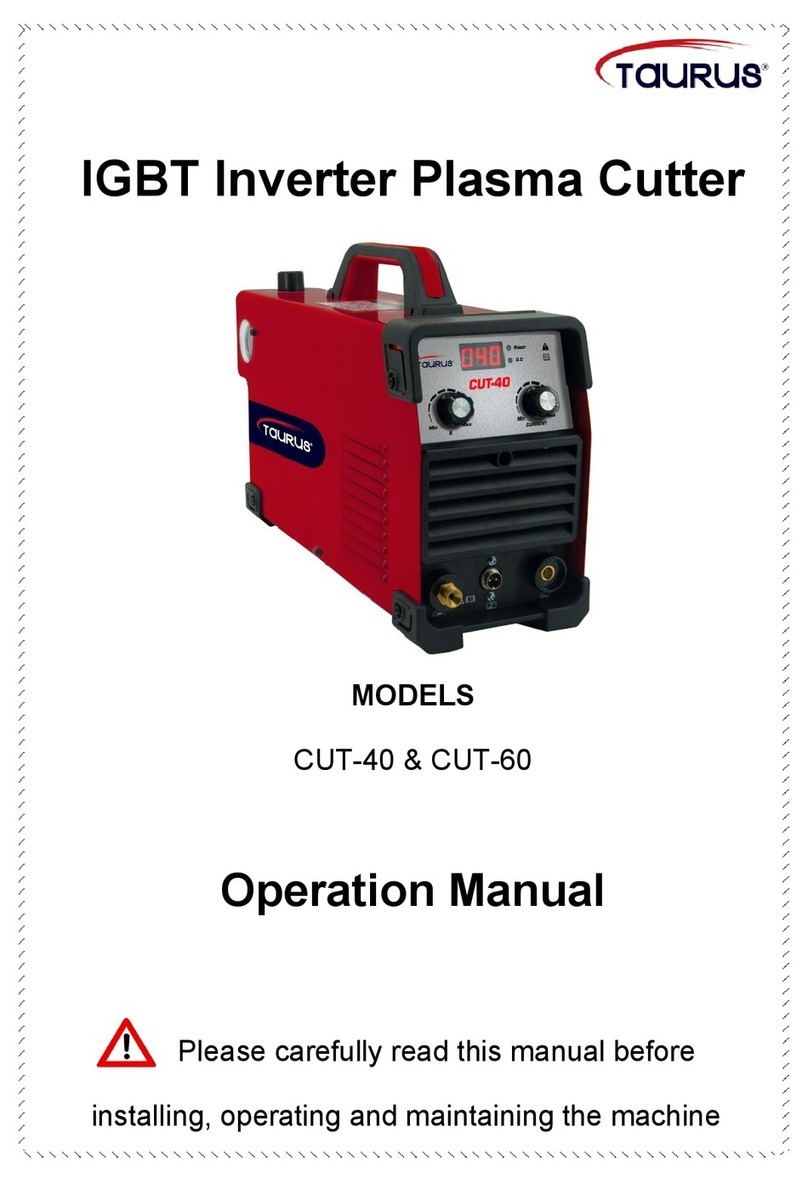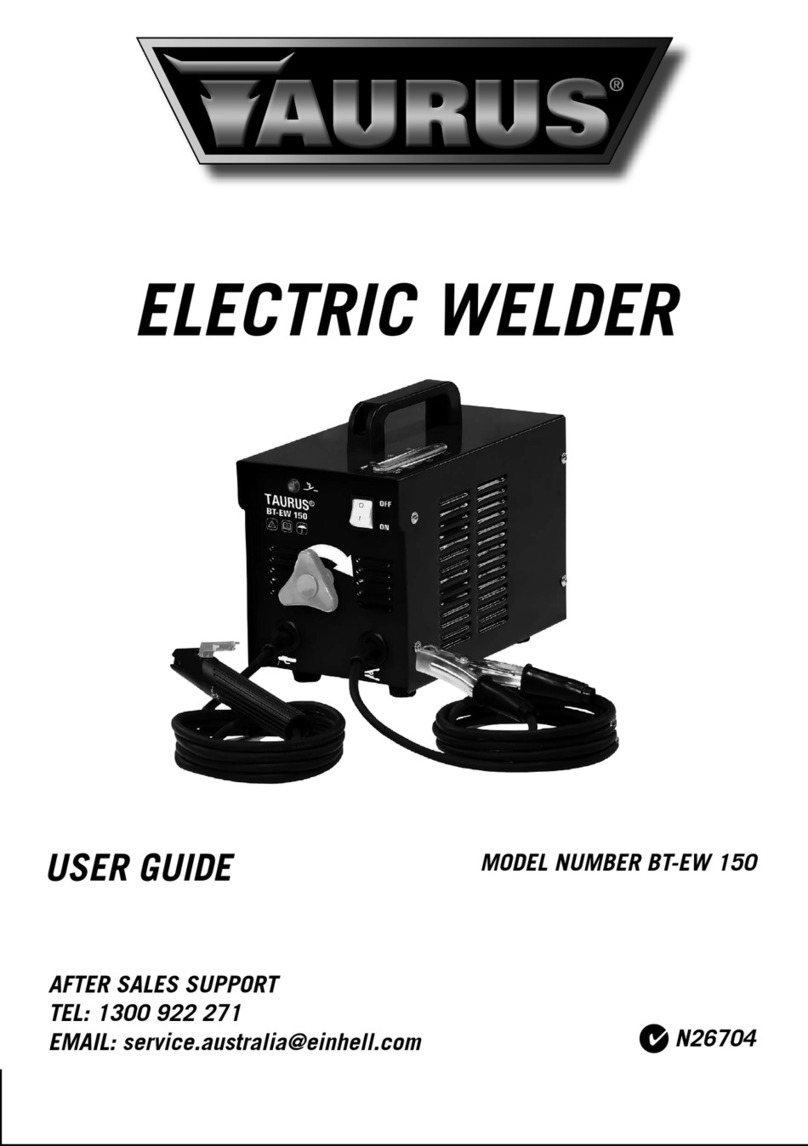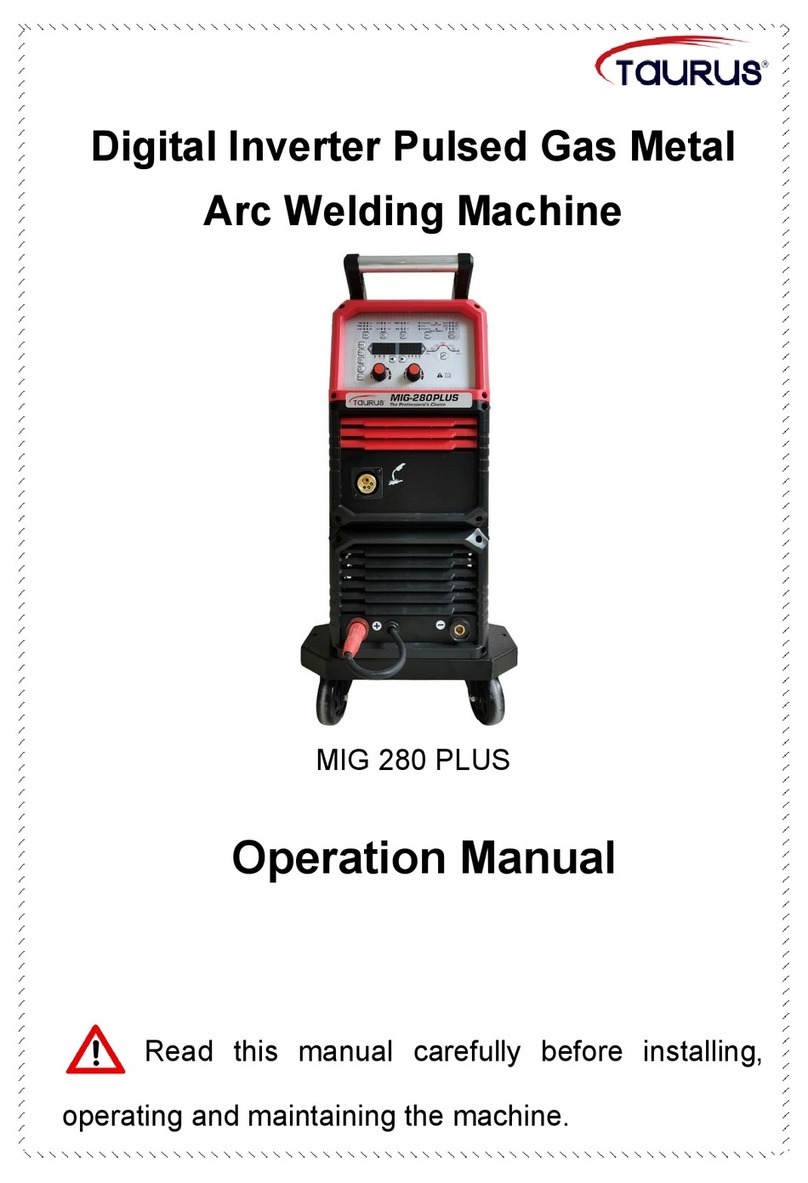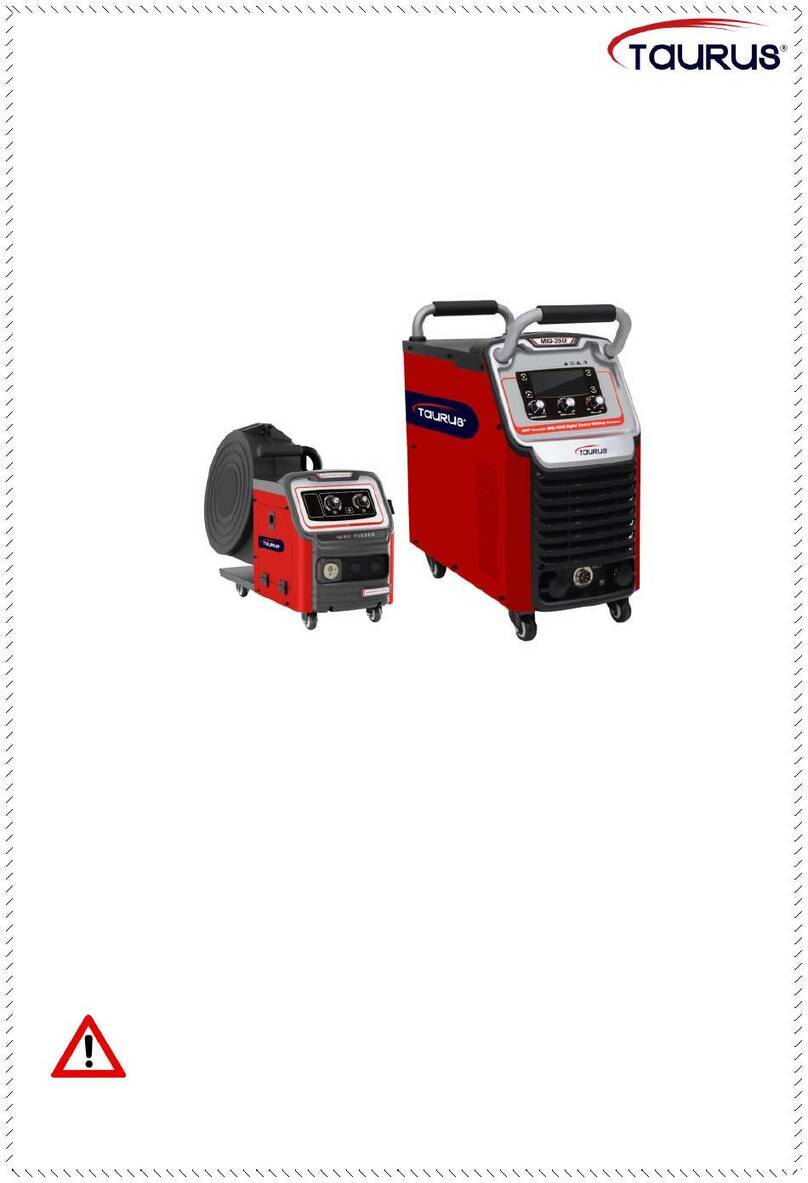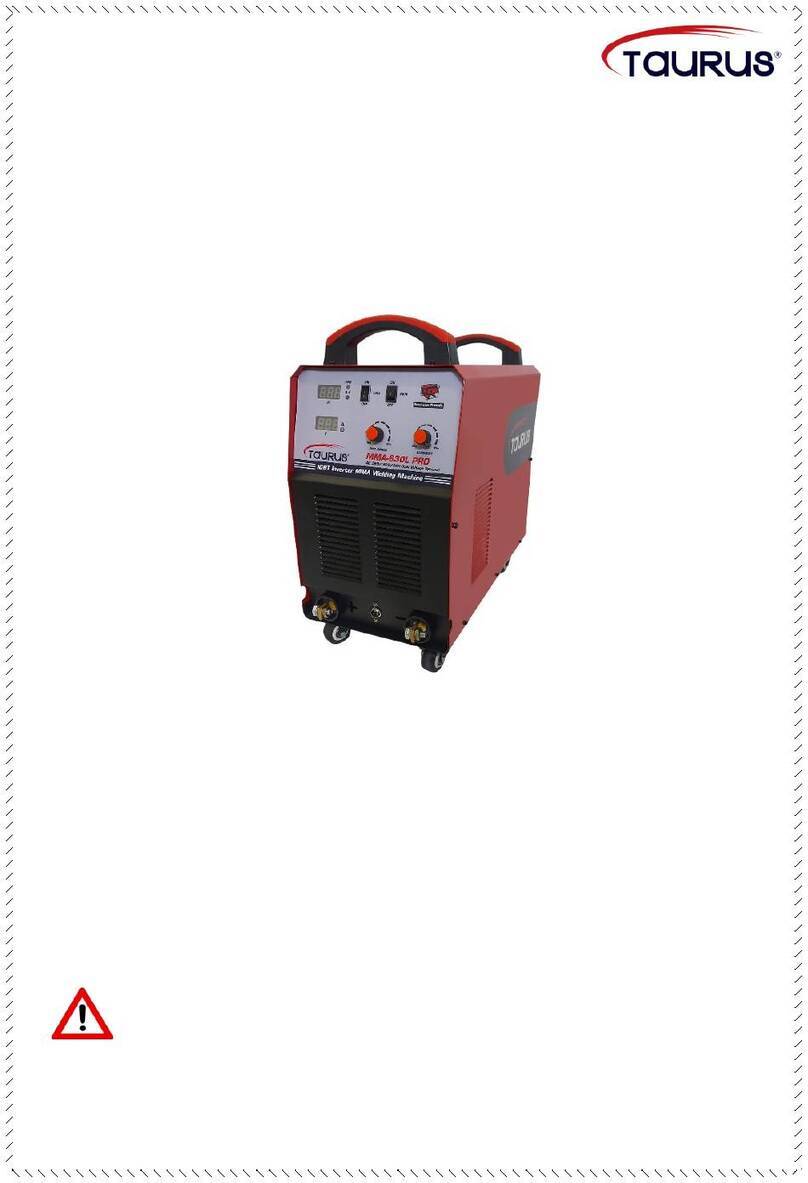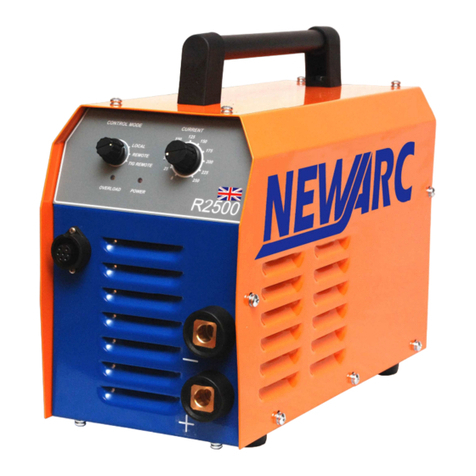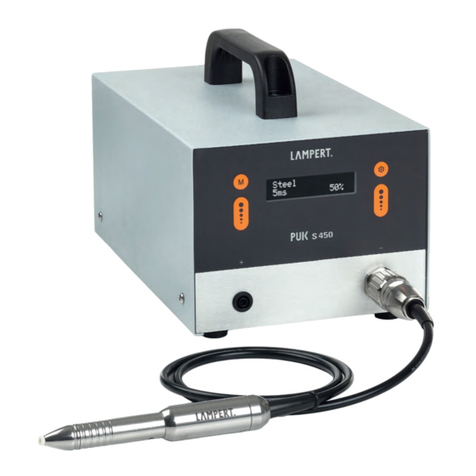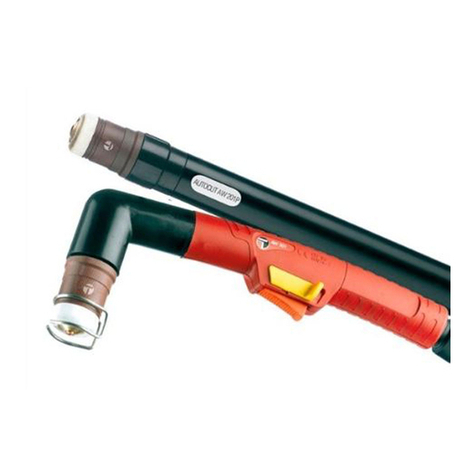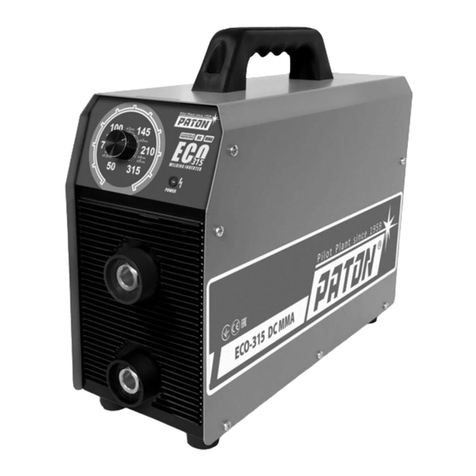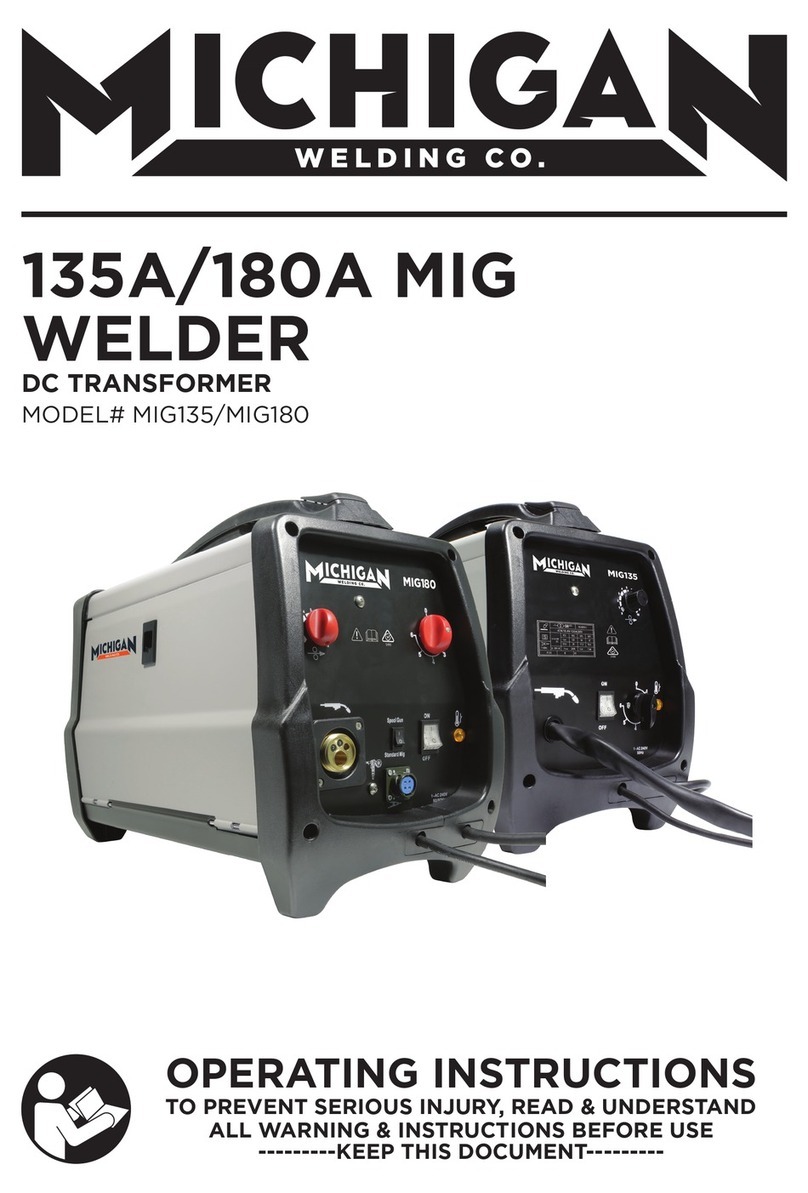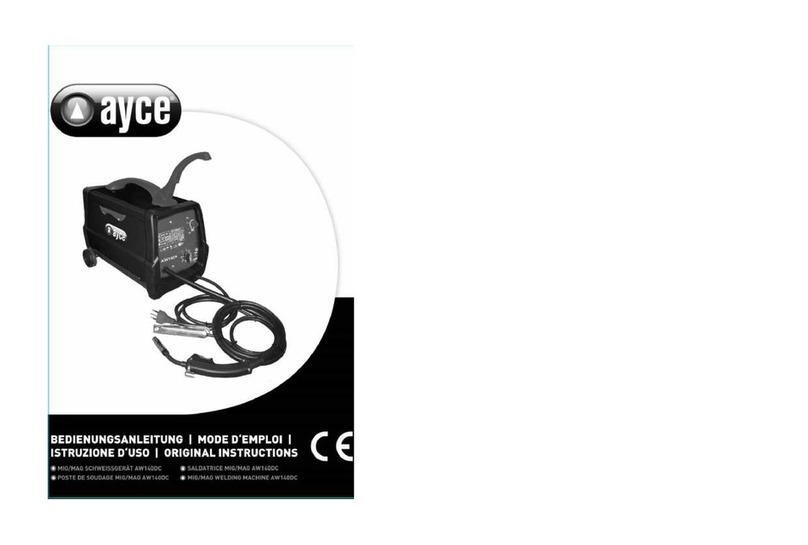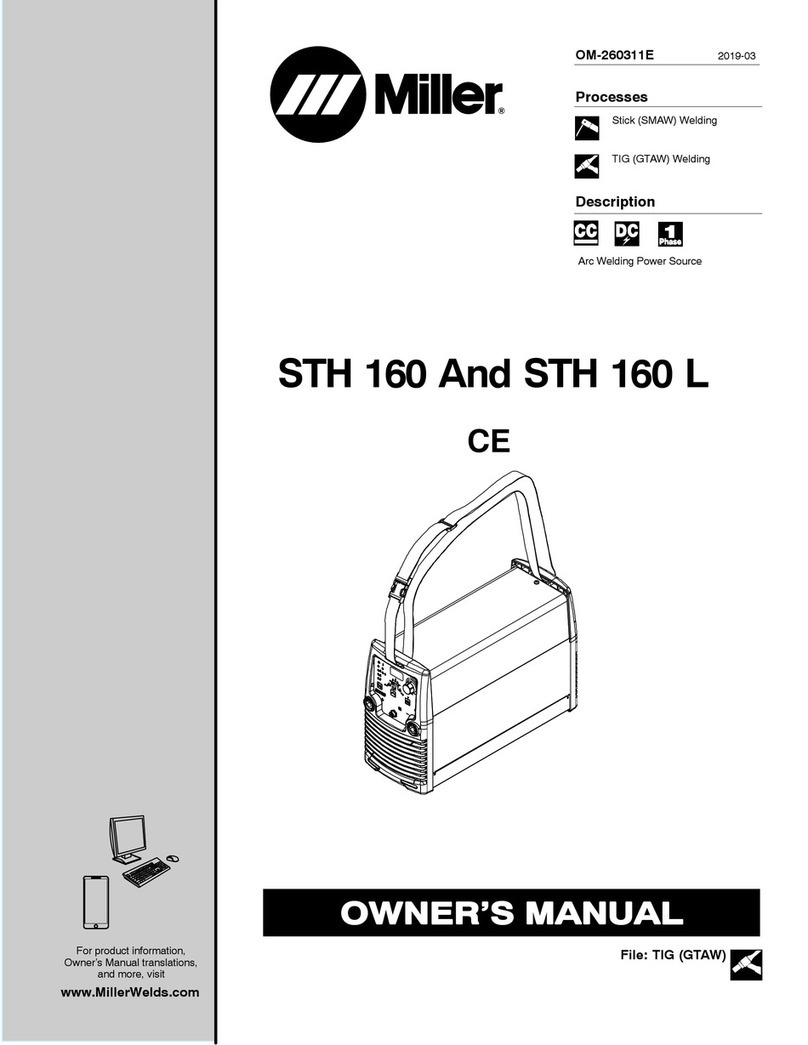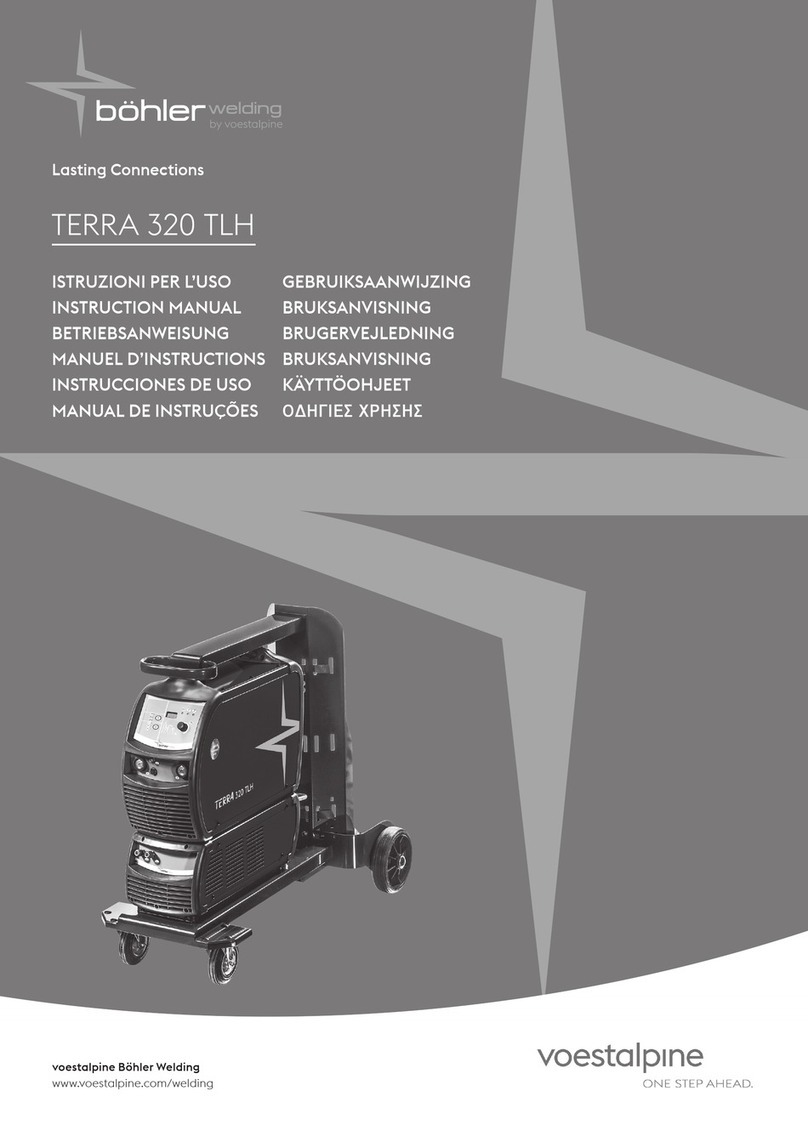Taurus ARC-200 User manual

- 1 -
Inverter DC Manual Metal Arc
Welding Machine
ARC-200
Operation Manual
Read this manual carefully before installing,
operating and maintaining the machine.

- 2 -
Description: This machine is designed and built to weld ferrous and non-ferrous
metals.
Disclaimer: The information, illustrations and instructions described in this manual
are based on the latest product information available at the time of publication.
The manufacturer and distributors reserve the right to modify the contents of this
manual at any time. Modifications may result following product modifications and the
manufacturer and distributors are not obliged to notify any organization or individual
of such modifications. Welding work must be executed only by professionally trained
and qualified individuals. Therefore, the manufacturer and distributors will only
accept responsibility for product quality. No liability, joint or several, shall be
accepted for incidents including but not limited to loss of profit resulting from
omissions or misdirection that may be printed in this operation manual. This manual
will contain as far as possible preventive and safe operation measures related to the
equipment but cannot exclude the occurrence of accidents. Therefore, the
manufacturer and distributors shall not be liable for any direct or indirect, joint or
several liability for any incidental or consequential damages which may occur. For
detailed health and safety information, the relevant professional agencies and
manufacturers of consumables such as welding materials and flux should be
contacted.
Warranty Exclusions:
✓Consumable items such as welding electrode, welding cable sets, fuses, quick
connectors, etc.
✓Machine damages caused by incorrect voltage input or power surges.
✓Machine or parts malfunction owing to incorrect connections or user operation.
✓Illegal disassembly or re-fitment of the machine without permission of the
manufacturer, resulting in damage or malfunction.
✓Accidental damage during shipment, transportation and storage.
✓Damage owing to incorrect handling, natural disaster and other force majeure
occurrences.

- 2 -
CONTENTS
Safety Precautions..........................................................................3
Warnings .........................................................................................4
Packaging and Transportation ...............................................................7
Parameters .............................................................................................8
Product Description ................................................................................9
Working Principle.................................................................................. 10
Installation and Wiring..........................................................................10
Brief Procedure for Welding Operation ................................................12
Maintenance .........................................................................................14
Common Machine Malfunctions and Solutions....................................15

- 3 -
Safety Precautions
The equipment is designed for use by qualified personnel who have completed
professional training and have obtained a qualification certificate as a welder. The
operator shall have sufficient professional knowledge of welding, cutting and circuitry. The
machine should be operated only after having read and fully understood all the safety
precautions and warnings contained in this manual and those generally applicable to
welding operations. The risk of personal injury and damage to equipment is reduced by
safety precautions being followed when using tools and equipment. This machine is
easy to operate and the selection of its functions is straight forward. Improper use and
maintenance will reduce the safe operation of the machine and the following safety
precautions must be followed:
1. The operator must be suitably qualified and certificated before operating the
equipment.
2. A qualified professional should be employed to ensure that the machine and all
cables are properly connected, grounded and installed.
3. Personal protective equipment approved by the local safety authority must be
used. All relevant safety procedures must be adhered to.
4. Before operation, insulation layers on wires and cables as well as connection
sequences should be inspected and corrected if required.
5. Repairs and maintenance should be carried out by qualified technicians only
after the machine has been disconnected from the electricity supply.
6. Operating the machine in a humid environment may result in a short circuit or
may cause an electric shock to the operator.
7. Modifications to the machine or equipment are not allowed.
8. The disposal of scrap machine parts and equipment must comply with local
regulations.

- 4 -
Warnings
Welding and cutting operations are specialised operations which present a certain
degree of risk. Professional training, correct operating procedures and protective
measures reduce the accident risk and damage to equipment.
Personal Safety Protection
Welding and cutting operations generate noise, bright light and
high-temperature sparks which will cause harm to human hearing,
eyes and skin unless personal protective measures are
implemented and proper operational instructions are adhered to.
1
Wear flame retardant personal protective equipment (PPE) such as gloves,
overalls, welding helmets with correct shading filter, shoes and aprons to
protect against thermal radiation, sparks and hot metal particles.
2
Hot sparks and metal fragments can cause skin damage. Avoid clothes with
front pockets and button-up sleeves and collars.
3
Use appropriate flame-retardant shields or curtains to protect bystanders
from arc radiation and high temperature sparks. Bystanders also need to
wear a protective helmet fitted with a shading filter to protect face and eyes
or a pair of spectacles fitted with shading filters.
4
Avoid burns and scalds by not touching a welded work piece with bare
hands.
Fire and Explosion Dangers
Welding and cutting operations generate high-temperature flames
and arc which can cause fires and explosions. The same applies to
welding slag and sparks.
1
Operators and bystanders must be protected from arc, sparks and metal
fragments.
2
The welding/cutting area should be free from flammable and explosive
materials. Should these materials be required in the welding/cutting process,
flame retardant covers should be applied.
3
Care should be taken to avoid fire hazards from cracked floors and walls.

- 5 -
4
Welding and cutting on sealed gas tanks will cause explosions. These
operations are prohibited.
5
Welding and cutting areas must be provided with adequate fire extinguishing
equipment. Regular testing for efficiency of this equipment is compulsory as
is training of staff in the use of the equipment.
6
Once the welding/cutting operation is completed, check for any high
temperature spark or metal which might cause a fire and immediately
dispose of it. If necessary, employ the assistance of a firefighter.
Electricity Hazards
Electric shock can cause serious injury or even death to the
individual when contact is made with live wires. Humid conditions
can add to the risk and great care should be taken when welding or
cutting machines are used in these conditions.
1
Reliable grounding of machine and work piece as well as a secure ground
clamp, is important.
2
Insulation layers of electric wires and cables must be checked regularly for
wear and replaced if necessary.
3
All equipment used and clothing worn during the welding/cutting operation
should be free from moist and kept dry.
4
Do not make direct body contact with any live electrical parts.
5
Wearing rubber-insulated shoes and standing on an insulated platform
greatly reduce the risk of accidental shock.
6
Refrain from replacing the ground cable on the machine with wires not
suitable for the task.
7
The machine operates on high voltage and capacitors remain charged even
after power is switched off. Removing covers for maintenance procedures
must only be executed by qualified professionals.
Effects of Electromagnetic Fields
Electric current flowing through a conductor produces magnetic
fields (EMF). The discussion on the topic of the effects of EMF on
the human body is ongoing worldwide and up to the present no
evidence has been forthcoming proving negative effects on health.
However, it would be wise to limit exposure to EMF as far as

- 6 -
possible and the following procedures are suggested:
1
Welders and cutters with cardiac pacemaker implants should obtain medical
advice on the effects of EMF on the implant.
2
Welders should minimise the possibility of electromagnetic field damage
through the following methods.
2.1
Route the electrode and ground cables together and, where possible, secure
them with tape.
2.2
Do not wrap wires and cables around arms or coil power cables around body
parts. If possible, keep cables away from the body.
2.3
Keep the distance between the ground clamp to the workpiece and the
electrode as short as possible.
2.4
Keep a safe distance between the operator and the welding/cutting machine.
Protection from Fumes and Gases
Welding and cutting produces a lot of fumes and gas, which is
harmful to human health.
1
The working area should be well ventilated and welding/cutting activities
should not be executed in confined spaces. Eye, nose or throat discomfort
can be the result of inadequate ventilation.
2
Welding and cutting in or near locations where chlorinated hydrocarbon
vapours are produced such as degreasing, cleaning and spraying
operations, should not be undertaken since phosgene, a highly toxic gas as
well as other irritants can be reaction products.
3
The industry offers a variety of respiratory masks and must be used in
conditions where clean breathing air is required.
Gas Cylinder Safety
Gas leaks can occur on cylinders connected to welding/cutting
operations if the system is not properly managed and maintained.
A ruptured cylinder or relief valve can cause serious injury or can
even be fatal.

- 7 -
1
Gas cylinders should be kept away from extreme temperatures and fire
sources. Scratching on cylinder walls with hard objects should be avoided.
2
A flowmeter should be installed on the gas cylinder in use in accordance with
the manufacturer's operating instructions. Quick-coupling connectors must
not be used and gas hose fittings should be tested for leaks.
3
Gas cylinders must always be kept upright and chained or belted to a
cylinder trolley, base, wall, post or shelf. Never fix a gas cylinder to a
worktable or machine: It can become party to an electrical circuit and
explode.
4
Ensure that the cylinder valve is closed when not in use. If there is no hose
connected to the flowmeter then cover the outlet with a dust cap.
Protection Against Moving and Rotating Parts
Moving parts, such as fans, rotors and belts, can be
hazardous.
1
Ensure that all protective covers, doors and panels on the machine are
closed or securely intact before starting an operation.
2
Ensure that maintenance on machines are only carried out by qualified
technicians.
3
Ensure that hands, hair, clothing and tools are safely out of range from
moving and rotating parts.
Packaging and Transportation
1. Pay attention to and comply with packaging, storage and transportation
instructions which are clearly identified on the containers.
2. Always handle all containers with care.
3. Equipment must be stored in waterproof, moisture proof and well-ventilated
facilities within the temperature range -25°C - 55°C.

- 8 -
Parameters
Model
ARC-200
Parameters
Value
Rated input voltage:
1PH-AC220V±15% 50/60Hz
Rated current input (A):
32.0
Rated duty cycle:
35%
Output current range (A):
20~200
Open circuit voltage:
56V
Applicable electrode(mm)
1.6~5.0
Insulation grade:
F
IP grade:
IP21S
Package dimensions(mm):
465*270*330
Product Description
This welding machine in the DC MMA series, inverts the 50/60Hz power supply to
a high-frequency, high-voltage power supply of up to 43-50KHz or even higher.
The advanced inverter technology allows for the construction of a smaller volume
and light-weight, stable and reliable transformer with a 35% improved efficiency.
Added to the advantages of the inverted power supply, the machine has good
dynamic characteristics and performance, offers a stable arc and good quality
welding as well as ease of control. It is widely used in electric power construction,
shipbuilding, machinery manufacturing, building construction, for production of
hardware products, DIY home and hobby projects.
Welding machines in this series are manufactured in accordance with safety
requirements for arc welding equipment, IEC60974-1 <Arc Welding Equipment -
Part 1: Welding Power Sources>.
1. Product Functions and Features:
1.1. Small size, light weight, easy to move and high efficiency. Especially suited for
application in situations requiring high mobility and elevated areas.
1.2. The advanced control technology ensures that a variety of welding applications
are met with excellent performance.

- 9 -
1.3. Easy arc starting, a stable arc, less spatter, a high metal-deposition rate, less
deformation and high seam quality.
1.4. The overheat protection system ensures a high degree of machine reliability.
1.5. The VRD anti-shock protection facility adds an important personal safety
feature and complies with international norms and standards.
2. Appearance Diagram
1
AC220V power indicator
2
LED display: Output current is displayed in real time. While data is set, the
set values are displayed.
3
Arc force current adjustment: The function of the arc force is to eliminate
the phenomenon of electrode 'sticking' and is adjusted by rotating the knob.
4
Welding cable coupling device, positive pole: Connects to electrode
holder cable set in DC electrode negative mode. Connects to earth clamp
cable set in DC current electrode positive mode.
5
Error indicator light: When no abnormalities are present during operation,
the light will be off. The light will be lit if abnormalities occur during operation.
6
Welding current adjustment: The output current is adjusted by rotating the
knob.
1
2
4
5
7
6
3

- 10 -
7
Welding cable coupling device, negative pole: Connects to electrode
holder cable set in DC electrode negative mode. Connects to earth clamp
cable set in DC current electrode positive mode.
Working Principle
1. Diagram Explaining Working Principle
1.1. A bridge rectifier converts AC to DC;
1.2. After secondary rectification and reactor filtering, output welding current is
delivered that meets the welding requirements;
1.3. Controlled by PWM the IGBT inverts the DC to 20KHz AC which is transmitted
via a high-frequency transformer;
1.4. The in-time protection circuit provides signals to the PWM warning for overheat
and over-current situations;
1.5. A closed-loop control system ensures a good anti-grid fluctuation ability and an
excellent cutting performance.
Installation and Wiring
1. Location Requirements
1.1. The machine should not be installed in an area where it is exposed to direct
sunlight or rain but where the humidity is as low as possible and the ambient
temperature is within the range of -10°C - 40°C.
1.2. The machine should be installed on a flat, preferable level surface but, in any
case not on a surface with an inclination of more than 10°.

- 11 -
1.3. The machine should not be operated in a work station exposed to wind.
Should a windy environment be unavoidable, suitable screening should be
installed.
1.4. In order to allow for efficient ventilation, a clear space of at least 20cm should
be allowed in front of and behind the machine as well as at least 10cm at each
side.
2. Power Input Requirements
The power supply waveform should be the standard sine wave with rated voltage
AC220V±15% 50Hz.
Model
MMA-200
Parameters
Value
Power supply:
1PH--AC220V±15% 50/60Hz
Rated input current:
32.0A
Input cable:
≥2.5mm2
Output cable:
20mm2
Ground cable:
≥2.5mm2
3. Main Power Supply Connection
Pay attention to prevent electric shock
Wear goggles
Take note of the following when the machine is connected to the main power
supply:
3.1. The connection must be carried out by a qualified electrician or technician.
3.2. The connection must be in compliance with national and local regulations.
3.3. Before the connection is carried out, the main power supply to the control box
must be switched off.

- 12 -
3.4. An earth cable set must be securely connected from the machine to the
work-piece. The machine must be earthed.
3.5. Ensure that the required power supply of the machine (as printed on its
nameplate) corresponds to the main power supply.
3.6. The connection screws on the terminal block must be tight ensuring a solid
connection between the machine cable wires and the main power supply.
3.7. The correct wiring procedure is explained in the following diagram:
Wiring of single phase AC 50/60Hz welding machine
No.
Item
No.
Item
1
Power cord
4
Overcurrent protection device
2a
Live wire L
5
GND
2b
Neutral wire N
6
Earth wire terminal block
2c
Earth wire
7
Electric control box
3
Terminal block
Brief Procedure for the welding operation
1. Welding Process
1.1. Wear the necessary welding protection equipment such as helmet, mask,
earplugs, protective clothing, gloves, insulating safety shoes.
2c
2b
2a
3
7
6
4
5
1

- 13 -
1.2. Confirm the electrical grid connected to the welding machine is consistent
with the correct power supply of the machine.
1.3. Confirm that the insulation layers on all the wires and cables of the welding
machine are intact and that the cable set is secure and correctly connected to
the machine.
1.4. Confirm the machine is freely vented and that the vents on the machine are
not obstructed and no objects are lying on the machine body.
1.5. Connect and tighten the earth cable to the negative pole. Clamp the other end
of the cable to the workpiece.
1.6. Connect and tighten the electrode cable to the positive pole. Use the
electrode holder to clamp the electrode.
1.7. Turn the machine on - the power indicator lights up and the fan becomes
operational.
1.8. Set the parameters for the welding job. The welding current is set in
accordance with welding rod specifications. (See table below).
1.9. Commence welding using short-circuit arc ignition.
1.10. Complete the operation following the normal procedure. During the
operation the parameters can be adjusted to suit the situational demands.
1.11. After completion of the operation, turn off the power using the switch on the
rear panel of the machine.
2. Table Guideline for MMA Electrode Specification and Welding Current
Electrode diameter
(mm)
Welding current range
(A)
Welding Voltage range
(V)
Φ1.6
44~84
21.8~23.4
Φ2.0
60~100
22.4~24.0
Φ2.5
80~120
23.2~24.8
Φ3.2
110~150
24.4~26.0
Φ4.0
140~180
24.6~27.2
Φ5.0
180~220
27.2~28.8

- 14 -
3. Schematic Diagram of Welding Machine
Direct Current Electrode Negative (DCEN): Suitable for acid electrode
welding.
Direct Current Electrode Positive (DCEP): Suitable for alkaline and
cellulose electrode welding (as shown in the figure above).
No.
Item
No.
Item
1
Welding machine
3
Earth clamp
2
Electrode holder
4
Work piece
Maintenance
Safe operation of the machine is dependent on regular maintenance and the
replacement of worn and defective parts where necessary.
3
4
2
1

- 15 -
1. Daily Precautionary Checks
1.1. For any abnormal vibrations, sounds or odours.
1.2. For any sign of overheating on cable connections.
1.3. Whether the power switch is operational and the fan operates smoothly when
the machine is switched on.
1.4. Whether cables are correctly connected, insulated and in sound order.
1.5. Torch consumables are subject to wear and tear and should be replaced when
worn..
2. Three to Six Monthly Check List
2.1. Dust Removal
Remove the side cover plate and clean off all parts with dry compressed air. Since
the effective cooling of the machine is dependent on a designed air flow pattern, it is
important to return the side cover plate after the cleaning operation. Not paying
attention to this detail, will result in over-heating of and consequent damage to the
transformer and semi-conductor parts.
Common Machine Malfunctions and Solutions
Warning:Machine maintenance and repair must be carried out by qualified
technicians. The operating voltage in the machine can be up to 600V and it is
important that power be cut at the machine and at the control box before
covers are removed and repairs carried out. A cooling-down period of at least
5 minutes is required before commencement of any inspection and repairs.
This will allow the capacitor to fully discharge.
1. Inspection Before Overhaul
1.1. Check if the line voltage on the three-phase power supply is within the range of
340V - 420V and, that all phases on a three-phase system are intact.
1.2. Check if the power cable as well as the earth wire is firmly connected.
1.3. Check whether the wiring connections are correct and firmly connected.

- 16 -
2. Common Machine Problems and Troubleshooting
No.
Problem
Root cause
What to do
1
Machine is switched
on, no indicator
light, fan not
operational, no
welding output.
Power phase down.
Check power supply phases and
rectify.
Power switch
malfunction or
damaged.
Repair or replace switch.
Control board
damaged.
Replace the control board.
2
Machine turned on,
power switch on the
rear panel shuts off
immediately.
Power switch broken.
Replace power switch.
IGBT damaged.
Replace IGBT and drive circuit
board.
Bridge rectifier
damaged.
Replace the bridge rectifier.
Control board
damaged.
Replace control board.
3
Warning light on
during welding
operation, but no
welding output.
Extended overload
operation.
Wait 2 - 3 minutes. Welding
machine to be used within the duty
cycle.
Power switch
damaged.
Replace power switch.
Faulty inverter circuit.
Replace inverter circuit board.
4
Welding current not
adjustable.
Failed current
potentiometer.
Replace potentiometer.
Machine control board
damaged.
Replace control board.
Table of contents
Other Taurus Welding System manuals
Popular Welding System manuals by other brands
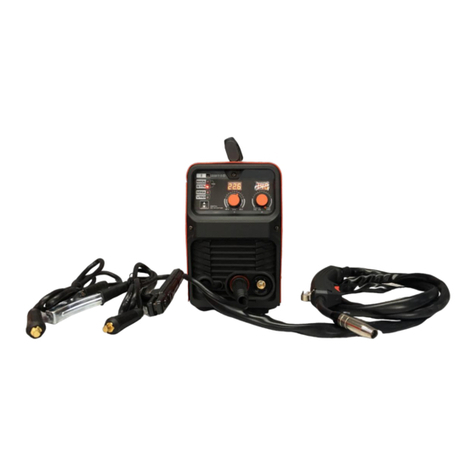
WELDCO
WELDCO MIG145 Operator's manual

Lincoln Electric
Lincoln Electric VANTAGE 400 (AU) Operator's manual
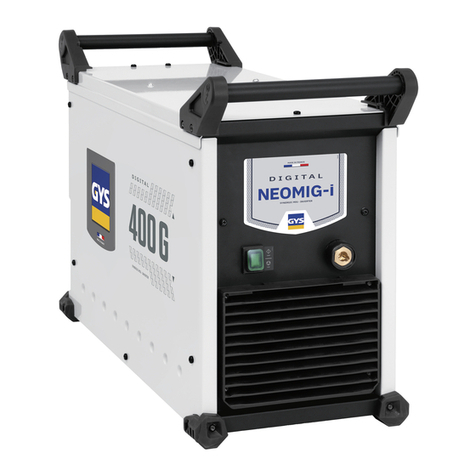
GYS
GYS NEOMIG-i 400 G manual

Hobart
Hobart Handler 190 Technical manual
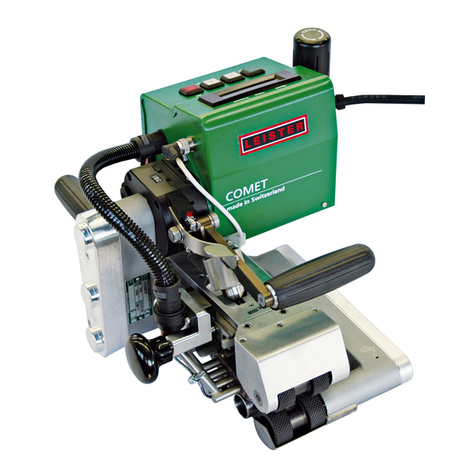
Leister
Leister COMET operating instructions
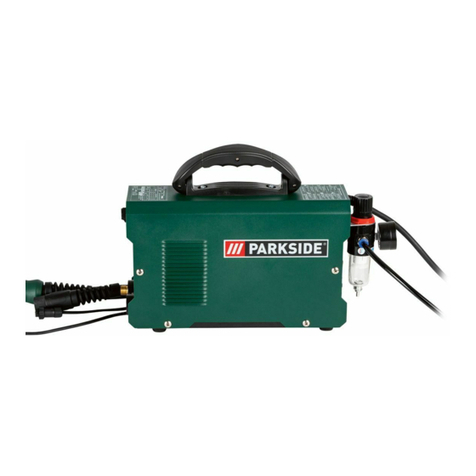
Parkside
Parkside PPS 40 B2 Operation and safety notes translation of the original instructions
